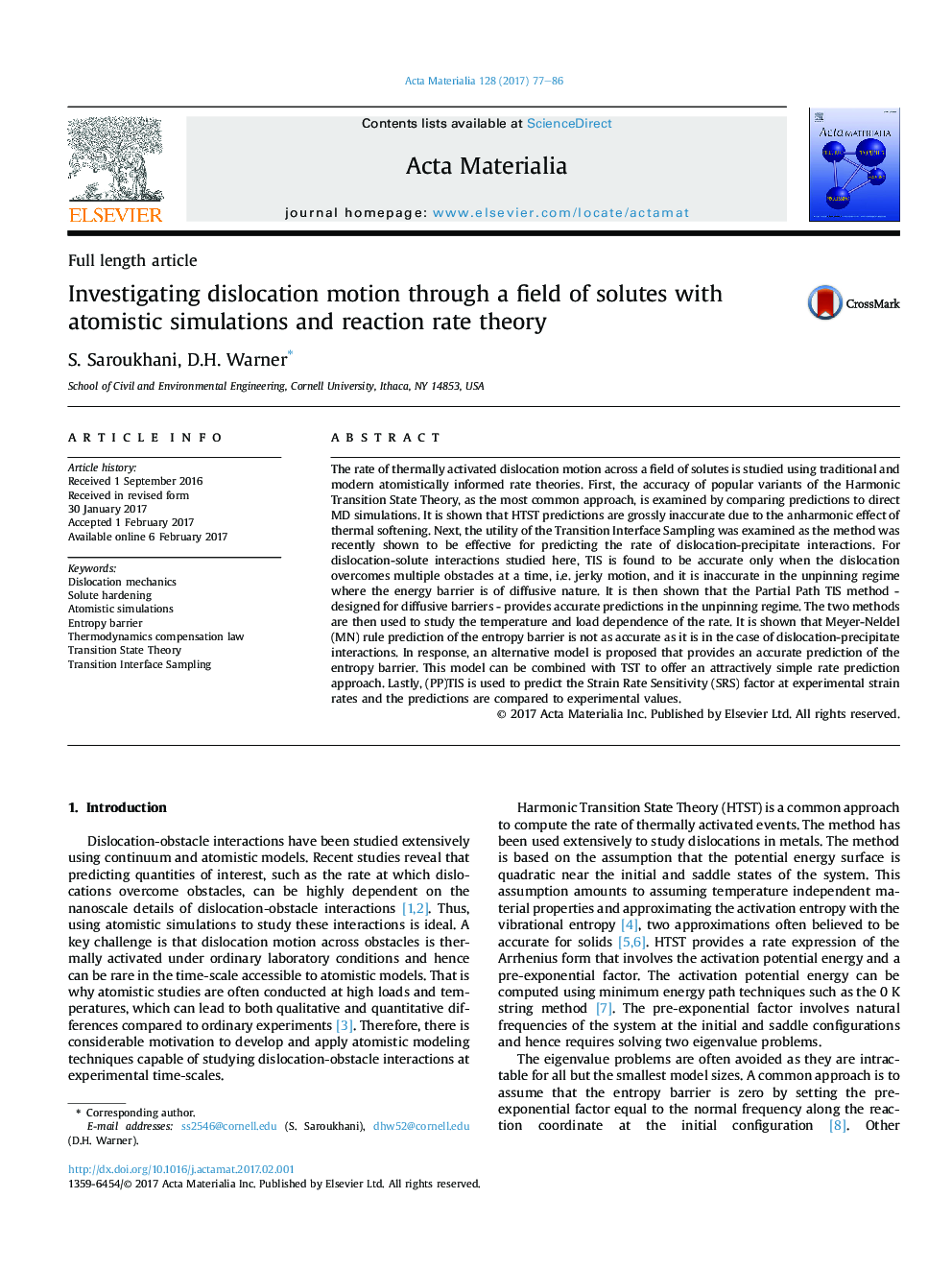| کد مقاله | کد نشریه | سال انتشار | مقاله انگلیسی | نسخه تمام متن |
|---|---|---|---|---|
| 5436261 | 1509548 | 2017 | 10 صفحه PDF | دانلود رایگان |
The rate of thermally activated dislocation motion across a field of solutes is studied using traditional and modern atomistically informed rate theories. First, the accuracy of popular variants of the Harmonic Transition State Theory, as the most common approach, is examined by comparing predictions to direct MD simulations. It is shown that HTST predictions are grossly inaccurate due to the anharmonic effect of thermal softening. Next, the utility of the Transition Interface Sampling was examined as the method was recently shown to be effective for predicting the rate of dislocation-precipitate interactions. For dislocation-solute interactions studied here, TIS is found to be accurate only when the dislocation overcomes multiple obstacles at a time, i.e. jerky motion, and it is inaccurate in the unpinning regime where the energy barrier is of diffusive nature. It is then shown that the Partial Path TIS method - designed for diffusive barriers - provides accurate predictions in the unpinning regime. The two methods are then used to study the temperature and load dependence of the rate. It is shown that Meyer-Neldel (MN) rule prediction of the entropy barrier is not as accurate as it is in the case of dislocation-precipitate interactions. In response, an alternative model is proposed that provides an accurate prediction of the entropy barrier. This model can be combined with TST to offer an attractively simple rate prediction approach. Lastly, (PP)TIS is used to predict the Strain Rate Sensitivity (SRS) factor at experimental strain rates and the predictions are compared to experimental values.
236
Journal: Acta Materialia - Volume 128, 15 April 2017, Pages 77-86
